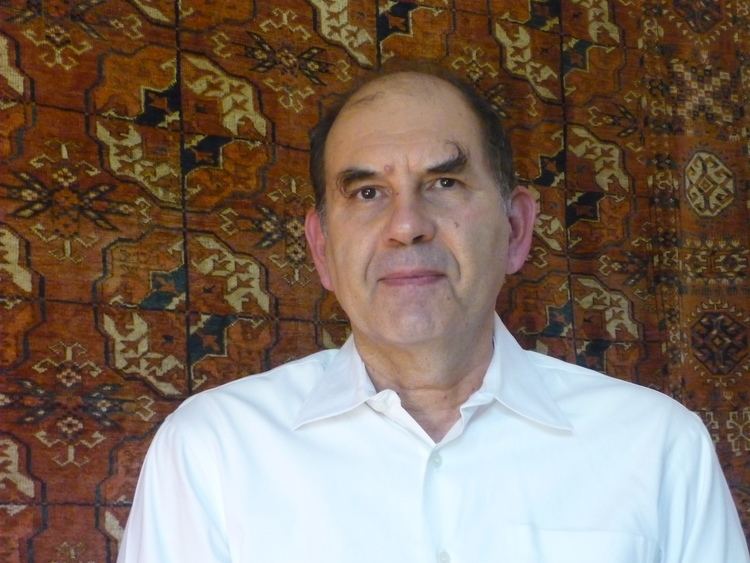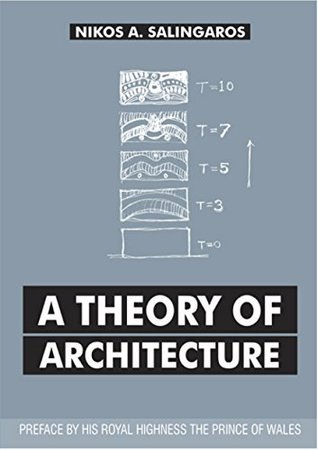Post
ARCHIVE | An Interview with Nikos A Salingaros
2 Apr 2020
A new urbanist's view of London’s growth
In this interview from Journal 472 (Autumn/Winter 2017) Nikos A Salingaros, mathematician, physicist and urban theorist, who counts the Prince of Wales among his fans - talks to urbanist Jonathan Manns about pattern books, beauty and tall buildings.
JM: Maths professors aren’t a common sight among the world’s urban theorists. How did you come to turn your thinking towards cities?
NS: My first interest was painting nature but since that was a terrible career choice I studied for a doctorate in Mathematical Physics. I’ve made a living as a mathematics professor and all this time have had a strong interest in artefacts, buildings, places and cities. As a graduate student I read a large number of architecture texts and the only ones that made scientific sense were those by the visionary architect and so ware engineer, Christopher Alexander. I made it a point to follow his work and when I visited Berkeley, California, for a conference, I called his home and visited him. We became friends and he asked me to help edit his monumental four-volume The Nature of Order, published between 2002-2004. What began as a fascinating side interest took over my life and thought. The more I got into the field, the more I realised there was an urgent need to prevent crazy design ideas being taken as gospel and stop the world going along with the madness.
JM: "The Nature of Order" by Christopher Alexander, describes a scientific view of the world in which there are common characteristics that breathe personal, emotional and even spiritual qualities into buildings and streets. You’ve also made the case in your book "Principles of Urban Structure" that there are scientific laws underlying successful urban form, with historic design typologies coming out on top. Why do some places make us feel alive whilst others do not?
NS: Scientific principles underlie successful urban form that accommodates human life but doesn’t concentrate on mechanical points such as fast vehicular traffic or maximising floor space in super-tall buildings. Human society has split from its connection with the environment. Before we accepted inhuman built environments, all that we ever built was guided intuitively, by processes that optimised a positive feedback from the forms and spaces. This created a healing environment in which to pursue our daily activities. This is the reason why traditional cities tend to make us – as people from a different time, place and culture, who didn’t necessarily build them – feel very much alive. Their genetic material correlates directly with our own body and psychological sensibilities.
Christopher, myself and people associated with us have devised a list of tools that measure the life-giving qualities of any environment, some of which are introduced in my book Twelve Lectures on Architecture. They explain, in quantitative and qualitative terms, why some places make us feel more or less alive. The correlation with what people actually feels astonishing and validates our criteria for measurement. It is unfortunate that this hasn’t entered the mainstream.
JM: You’re describing a scientific approach with aesthetic implications. To what extent is there a relationship between a successful place and a beautiful place?
NS: A successful place is one in which thousands of daily tasks are performed with optimal emotional and physical satisfaction, which includes just "being there". A person is not a numbered machine part that has to move from point A to point B, to produce and to consume. People can stand or sit in a place and just absorb information to feel good. That's what tourists pay for!
Beauty is a dangerous word because the general public will tell you that the place I have described is beautiful whereas trained architects will tell you that it is phoney, nostalgic and must be torn down to erect some glass and concrete monstrosity. Real-estate speculators love architects for this! Beauty is indeed linked to success but this is something only the general public understand and even they are misled by propaganda promoting supposedly modern forms of design.
JM: There are nonetheless many people who admire the appearance of London’s tall contemporary buildings, as well as those who enjoy working and living in them...
NS: It's one thing to admire giant shiny sculptures from afar as aesthetic objects. The problem is that it ignores what they do to the lives of those who work in and around them, and how they massively degrade the fine structure of living urban fabric. The aesthetic admiration of giant things that destroy a city's life is totally irresponsible. As for those who enjoy working and living in tall buildings, it's invariably high-net-worth individuals who can afford to jet to holiday settings in natural environments, to experience traditional architecture and urbanism elsewhere. Living in tall buildings is tantamount to sensory deprivation and so is not for the rest of us. The message I would communicate is: "Try to live and work for a year in a skyscraper without any additional architectural and urban nourishment from traditional forms on the ground and the mixing of people: noisy and crowded but necessary for life.”
JM: A key element of the tall-buildings debate is how they touch the ground. Your work promotes complex, fine-grained, asymmetrical and connected urban form. What does the ideal street look like?
NS: Consider tall buildings as storage for things, having nothing to do with the vibrant human life at street level. Useful tall buildings would be warehouses for goods, vertical cemeteries and prisons. Then we can work on the living part: the first four storeys. Those have to be made welcoming, to adapt to the fluxes, flows and human dimensions of the ground. The complexity of needs, the existing footprints and urban flux will determine a rather asymmetrical base for the tall building. We have to get this right otherwise it kills the humanity of the streets all around. Egomaniacal architects, supported by present-day zoning, get this aspect totally wrong. It doesn't really matter what the middle and top look like in my approach, since those floors are used only for storage!
JM: Taking a real-world example, the City of London Corporation is proposing a new Centre for Music on the Museum of London site once it has moved to the historic Smithfield market. How should it be approached?
NS: The Museum of London site is highly problematic. The design of the present building rules out human-scale connections that are absolutely necessary to make any project work. The surrounding glass-faced industrial buildings don't help either. Léon Krier has published a wonderful human-scale design for a new London Concert Hall at Great Portland Street. As an alternative, I suggest employing another classical architect such as Robert Adam or José Cornélio da Silva, with a separate team to fix the urban connection problem. We could bring cutting-edge sensor technology to design the urban space and approaches. I could coordinate some young scientist-urbanists like Itai Palti and Daniele Quercia to optimise the flows from a human perspective, while working with a more traditional form language.
JM: London’s skyline and urban form has changed significantly since a settlement was established by the Romans around 50AD. Is there any period of growth that best embodies the principles of good design?
NS: Those prior to the curse of post-Second World War industrial modernism. London was a complex human-scale city with a living urban fabric. Those wonderful buildings and neighbourhoods were mixed and juxtaposed with slums and degraded pockets. That’s human society, but the flux of normal urban life has been altered irremediably. The place of the human being in the city has been erased by super-towers. London lost its pocket parks and small squares when everything moved to an inhuman scale.
JM: Your thinking has heavily influenced the “New Urbanism” movement. Famous examples include Seaside in Florida and, closer to home, Prince Charles’ Poundbury in Dorset. What might London learn from these?
NS: These highly successful developments have a much lower density than is needed for the centre of London but those who take the trouble to study the principles of New Urbanism will discover codes developed for high-density central-city urbanism, called “the Transect”. Krier, who developed the coding for Poundbury, also has appropriate density solutions. The design and planning apparatus exists for London, but not by superficially copying Poundbury or Seaside.
JM: That being the case, with London anticipated to grow to 10 million residents by 2030 the Mayor is consulting on a new London Plan. What policies would you like to see him implement?
NS: Who says that London has to accommodate 10 million residents? This projection is based on the fact that enough of older London is still standing right now to attract new residents from around the world. They are not coming for the glass towers, but for the human-scale older urban fabric. Government planners don't seem to realise that replacing this older urban fabric with new high-rises in a misguided effort to accommodate residents will remove one of the main reasons people wish to relocate to London in the first place.
The first policy that the Mayor of London needs to implement is: “Save the human parts of London from destruction!” Otherwise there will be no London left worth saving. A second, complementary policy, for all new construction, is to require that: “Any new building and urban intervention has to follow known mathematical rules for generating human-scale, healing urban fabric.” These guidelines might help guarantee a London that is viscerally attractive in 100 years’ time.
JM: Finally, given your own design principles, what is your favourite place or building and why?
NS: My favourite building in the USA is the Carson Pirie Scott building by Louis Sullivan in Chicago, despite some nasty alterations. My favourite urban space is the Foro Romano in Rome. When experiencing them, I feel very much like I'm eating a wonderful meal with exquisite wine: the millions of details I connect with nourish my body and soul. There is no reason why we cannot strive to reproduce those feelings in everything that we build today. Only ideology, ignorance, and architectural arrogance prevent us from doing so.
Nikos A Salingaros, is Professor of Mathematics at the University of Texas, with research interests ranging from thermonuclear fusion, superconducting magnets and plasma physics to, perhaps intriguingly, the application of maths to architecture and urbanism. He is the author of six monographs on architectural and urban design including A Theory of Architecture, Principles of Urban Structure and more recently (with Michael Mehaffy) Design for a Living Planet. ought- provoking and occasionally controversial, he has been listed by the quarterly American magazine Utne Reader as “One of 50 Visionaries Who Are Changing Your World” and ranked 11th in the American planning-related news website Planetizen’s “Top 100 Urban inkers of All Time”. In the UK, he counts royalty amongst his fans, with HRH Prince Charles claiming: “Surely no voice is more thought-provoking than that of this intriguing, perhaps historically important, new thinker?"
Jonathan Manns is Board Director and Head of Planning and Development at Rockwell. Widely acknowledged as the pre-eminent British Planner of his generation, Jonathan leads on the design and delivery of our development pipeline. Previously Director, Head of Regeneration and Head of London Planning at one of the world’s largest real estate advisory firms, Jonathan has an impressive track record managing complex and high-profile projects. A tireless promoter of planning, he is also a writer, speaker, lecturer, campaigner and founder of the APPG for London’s Planning and Built Environment.

